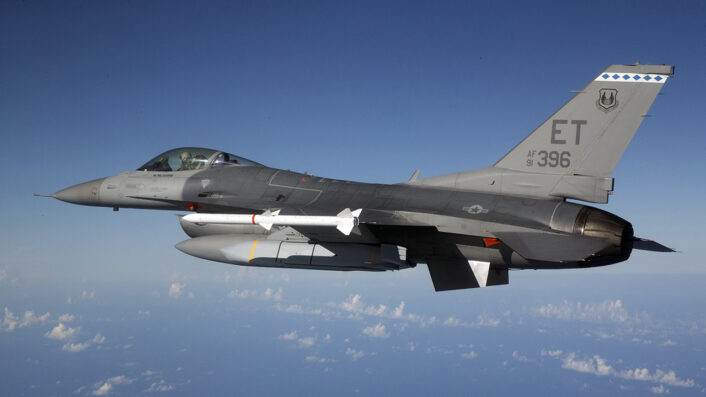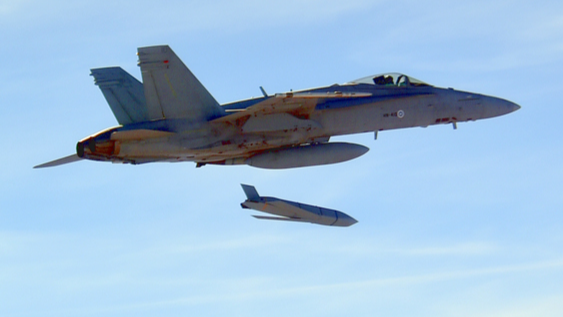The delivery of the JASSM-ERs will be aligned with the integration timeline of the Finnish Air Force F-35.
On May 31, 2024 Finland Defence Minister Antti Häkkänen announced it is acquiring more Lockheed Martin AGM-158B JASSM-ERs (Joint Air-to-Surface Stand-off Missile – Extended Range). Helsinki already uses the ‘A’ variant of the missile (AGM-158A JASSM), which is carried by the Finnish Air Force’s fleet of Boeing FA-18C/D Hornets.
The announcement of the JASSM-ER’s acquisition comes four years after the US government approved its sale to Finland. This was a part of a wider package aimed at supporting the F-35A’s bid into the Finnish Air Force’s HX program, meant to replace its older Hornets.
While the JASSM can reach 370-km, the JASSM-ER can touch distances of nearly 1,000-km through the addition of a new turbofan engine and additional fuel.
Logistics Command to procure JASSM-ER long-range air-to-surface missiles for @FinnishAirForce F-35 Multi-Role Fighters. Learn more: https://t.co/ztugRVRl7s#ilmavoimat#pvlogl#F35#F35Programme#jassm
Photo:Lockheed Martin https://t.co/YcxlUVUOIZ pic.twitter.com/UptwnoWHsf
— Puolustusvoimien logistiikkalaitos (@pvlogl) May 31, 2024
The newly ordered JASSM-ER will be meant to be operated by the Lockheed Martin F-35A Lightning II. The Finnish government selected the F-35A on Dec. 10, 2021, after the HX program concluded. It is slated to receive 64 of the jets. According to Defense News, the first batch of the F-35s on order are “due for delivery and then deployment to Arctic air bases in Finland’s Lapland region by 2026.”
‘Enhancing Finnish Defense Capabilities’
“The procurement that will be carried out by the Finnish Defence Forces Logistics Command supplements the F-35 multirole fighter system’s capability with the precision-guided munition of a longer than previous range,” Finnish Defence Forces Logistics Command said, following the announcement. The JASSM-ERs, that “enhance the air-to-surface capability range,” will be delivered “aligned within the integration timeline” of the Finnish Air Force F-35.
As per the LOA (Letter of Approval), the acquisition would comprise of “missiles, manuals, documentation, replacement parts, equipment, transportation services as well as manufacturer and supplier training, US administrative services, repair and support services” in the years 2024-2031.
A statement from the Finnish Defense Forces Logistics Command quoted Colonel (retd) Henrik Elo: “The range, accuracy and survivability of the weapon effect will essentially contribute to our own countermeasures to stop a potential aggressor. Apart from the other F-35 features, the current procurement will enhance our defence capability significantly.”

Poland Recently Bought it Too
Besides the United States, AGM-158A missiles are also used by US allies, Australia, Poland, South Korea and Japan. On May 28, 2024, Poland sealed a contract to buy another batch of JASSM-ERs, when the Polish Deputy PM and the Head of the MoD Władysław Kosiniak-Kamysz signed a new contract worth US $735 million.
The State Department had approved the deal in March 2024 that covered a maximum of 821 missiles. Poland’s MoD however did not specify a number, mentioning only “hundreds” of missiles. Poland in 2023 also expressed its interest in the AGM-158D JASSM-XR (with an estimated range of 1600-1900 kilometers). This version has been ultimately designated the AGM-158B-2.
It would be pertinent to note that Poland too is slated to receive the F-35, possibly by November this year, inspector of the Polish Air Force General Ireneusz Nowak told Polsat TV. Poland had concluded a contract with the US in January 2020 to procure 32 of F-35As for a cost of $ 4.6 billion.
Battlefield Utility
Kosiniak-Kamysz himself touched upon the doctrinal thinking behind the JASSM’s employment. “This is not a procurement of tactical nature, it is a procurement that remains strategic. This is strategic equipment of the Polish military, changing our position, and our capabilities in the airspace, pertaining to defense and deterrence. It is a key contract.”
The ongoing war in Ukraine in general and the European theater before Russia in particular, is primarily land-centric, with heavy attritional ground battles, where the military and tactical goals revolve around annexing and control of territory.
Both countries have also used their air forces in support of land operations, and heavy land strikes, seen in Russia’s long-range stand-off fires with the Kh-101 released from the Tu-160, Tu-95 strategic bombers, or the British-French Storm Shadow/SCALP EG fired from Ukraine’s Su-24 Fencer. Its series of strikes on Russia’s air bases and AD (Air Defense) placements using the ATACMS (Army Tactical Missile System) is another example.
The JASSM-ER, operated by a fleet of networked, extremely LO (Low-Observable) F-35s, also trading data with Generation 4++ platforms, can significantly hold at risk several Russian large battlefield targets and supply nodes. A simultaneous, coordinated attack like this can have semi-strategic impact on the front.
This is because such attacks force a country to essentially its complete military posture and political objective, which in Russia’s case may very well veer into nuclear posturing. Putin promises the use of atomic weapons in the event of an “existential” threat to Russia.
A defense industrial reliable NATO, that has overcome its current military production issues with a majority of member countries operating F-35s poses a significant military threat to Russia, which will be a very tall order for its military.









